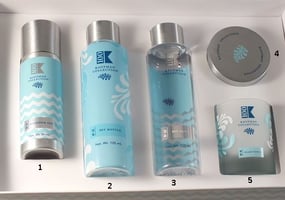When people think about some of the biggest brands in the world—Nike, Coca-Cola, Apple—there's a...
How Color Psychology Affects Logos And Package Design
The idea that colors are symbolic of certain emotions or positive characteristics is no novel concept. Even common expressions play on the connection; if you're mad, you may be "seeing red," and sadness may leave you "feeling blue." However, the psychological correlation may run even deeper. While everyone perceives color and their meanings differently, general guidelines gleaned from years of studies can be almost universally applied, and companies regularly use this information in their logo design.
How Color Psychology Works
When the eye views colors, photoreceptors called cones transmit signals to the brain, which decodes the visual stimuli and gives them meaning. This meaning can be emotive or indicative of certain traits, such as health, power, or luxury. This is the primary reason advertisers use color psychology when designing logos; consumer perceptions subconsciously influence the way they feel about a product just by looking at its packaging design. Also, color plays a significant role in memory. In some instances, a certain color or colors may create an instantaneous connection in the consumer's brain. For example, red and yellow may immediately bring to mind McDonald's. By using color, companies can create a memorable logo that conveys a similar meaning or perception across a wide consumer base.
Common Color Associations
Colors are often chosen based on their industry popularity.
- Blue: Technology and insurance (trust, dependability, logic)
- White: Health and wellness (purity, cleanliness, hygiene)
- Green: Nature and outdoors (eco-friendly qualities)
- Red: Retail (new, exciting, stimulating)
- Black: Fashion and finance (dignity, wealth, sophistication)
Choosing for Success
The key to taking advantage of color psychology is performing industry and market research. According to research by the Cardiff Business School, the way a company uses color can drastically change its meaning. Green, for example, can be associated with health or sickness. Color meaning also varies by factors such as culture and gender, so the colors used in logo design must appeal to the intended market. By making a sound, logical decision on color, companies may find that its positive perception by consumers lends to its ultimate success.
Another critical aspect of a good branding strategy is product packaging. Kaufman Container has been providing quality packaging that complements our clients' brands since 1910. Call us today at 216-898-2000 to find the best stock packaging or custom packaging for your brand.



